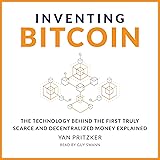The financial landscape is undergoing a profound transformation, and at its forefront stands Bitcoin. As highlighted in the accompanying video, this innovative digital asset presents a compelling argument as a crucial component of a forward-thinking investment strategy. Far from a fleeting trend, Bitcoin has emerged as a robust solution to challenges posed by traditional monetary systems, offering a unique opportunity for wealth preservation and significant growth in the coming years.
Understanding Bitcoin’s Value in a Shifting Economic Landscape
For investors seeking substantial returns, identifying assets “ahead of the curve” proves critical. Historically, the monumental wealth creation seen with early internet giants like Amazon and Google was not available to those who waited for these companies to become universally accepted. Similarly, Bitcoin, currently priced around $7,000 at the time of the video’s recording, stands poised for exponential growth, with projections suggesting values of $100,000 by the end of 2021, $400,000 by 2024, and even $3,000,000 per Bitcoin by 2028, according to scarcity-based models like the one popularized by PlanB.
This may sound audacious, yet it underscores the potential when evaluating novel technologies. Established assets, while seemingly “safe,” typically offer modest growth for new entrants. By contrast, truly transformative investments often appear “weird” or controversial in their early stages. The internet itself faced widespread skepticism in the mid-1990s, with many economists and technologists dismissing its scalability and practical applications. Those who recognized its disruptive power, however, reaped unparalleled rewards. Today, Bitcoin occupies a similar position, demanding a long-term perspective from its proponents.
Dispelling Myths: Bitcoin is Not a Ponzi, Bubble, or Hackable Asset
New technologies, especially those challenging established norms, inevitably face criticism. Bitcoin is frequently labeled a Ponzi scheme or a speculative bubble. However, a fundamental understanding of its architecture dismantles these accusations. Unlike a Ponzi scheme, Bitcoin lacks a centralized authority or a charismatic founder who promises returns paid out by new investors. Its decentralized, open-source network operates without a single point of control, making it inherently resistant to such manipulations.
The “bubble” narrative, which has persisted since Bitcoin traded for mere cents, also falters upon closer inspection. Comparisons to the 17th-century Dutch Tulip Mania, where prices of tulip bulbs soared unsustainably, fail to grasp Bitcoin’s fundamental difference: its absolute scarcity. While tulips can be grown endlessly, Bitcoin has a hard-capped supply of 21 million units, coded into its protocol from inception. This fixed supply, combined with growing demand, creates a deflationary pressure entirely absent in traditional bubbles.
Another prevalent misconception centers on Bitcoin’s security, often fueled by reports of exchange hacks like the infamous Mt. Gox incident. It is crucial to distinguish between a centralized exchange’s vulnerability and the Bitcoin network’s resilience. The Bitcoin protocol itself, secured by advanced cryptography and distributed ledger technology (blockchain), remains mathematically impenetrable. The hundreds of millions, even billions, of dollars worth of Bitcoin visible on the public blockchain, such as addresses holding $670 million or $1.8 billion, serve as undeniable proof of its unhackable nature. Losses typically occur when users store their Bitcoin on third-party exchanges or carelessly manage their private keys, which are akin to digital passwords, rather than directly controlling their own assets.
Furthermore, Bitcoin’s association with illicit activities is frequently overblown. While a small percentage of Bitcoin transactions may be linked to the dark web, the overwhelming majority of global illegal transactions utilize fiat currencies, most notably the U.S. $100 bill. Dismissing Bitcoin solely on this basis would necessitate dismissing nearly every global currency, a logically inconsistent position. The Bitcoin community is predominantly composed of tech enthusiasts and forward-thinking individuals seeking a fairer, more transparent financial system.
Bitcoin: The Premier Digital Store of Value
The primary argument for Bitcoin rests on its function as a superior store of value, a critical characteristic of sound money. A store of value allows individuals to preserve their purchasing power over time. The video vividly illustrates this with the Big Mac example: a burger costing 40-50 cents in the early 1970s now commands $5-8. This erosion of purchasing power, or inflation, is not accidental. It is a direct consequence of central bank policies, particularly the continuous printing of fiat money—currencies like the U.S. dollar, Euro, or Yen, which are not backed by any physical commodity and can be created at will by governments.
Examining the U.S. Federal Reserve’s balance sheet reveals this stark reality. From under $1 trillion in 2000, it surged to nearly $6 trillion by early 2020, with a significant portion of that expansion occurring in a single year. This unprecedented money creation effectively devalues existing currency, acting as an invisible tax on accumulated wealth. Individuals are then forced into “riskier” assets like real estate or stocks merely to keep pace with inflation, often enduring considerable volatility in the process.
Bitcoin, however, offers a robust alternative. Its fixed supply of 21 million units provides a programmatic scarcity that directly counters the inflationary pressures of fiat currency. Like gold, which governments actively discourage because it offers an alternative to their printed money, Bitcoin serves as an independent, censorship-resistant asset. While Bitcoin’s price can be volatile, especially in its nascent stage, this volatility is a feature of high-growth assets. Early investors in Amazon witnessed extreme price swings, yet those who persevered reaped immense rewards. Waiting for Bitcoin to become “stable” likely means missing the most significant upward moves.
How Bitcoin Works: Decentralization, Mining, and Security
The genesis of Bitcoin in 2009 by the pseudonymous Satoshi Nakamoto was a direct response to the 2008-2009 financial crisis and the subsequent bank bailouts. Satoshi’s white paper introduced a revolutionary peer-to-peer electronic cash system built on a decentralized network.
Bitcoin’s fixed supply is its most defining characteristic, making it inherently rarer than gold. While there’s gold deep within the Earth and potentially asteroids, the maximum number of Bitcoins that will ever exist is 21 million, a limit hardcoded into its protocol.
The network is maintained through “mining,” a computational process where specialized, high-powered computers solve complex cryptographic puzzles. This energy-intensive process verifies transactions and adds new blocks to the blockchain, Bitcoin’s distributed public ledger. Far from being environmentally destructive, Bitcoin mining increasingly leverages stranded or renewable energy sources, particularly in remote regions with abundant hydroelectric or geothermal power. This intelligent use of energy not only secures the network but also transforms otherwise wasted resources into economic value, making Bitcoin arguably a “greener” form of money than its detractors often claim.
The decentralized nature of Bitcoin is its ultimate safeguard. With thousands of nodes distributed globally, governments cannot simply “shut down” Bitcoin. Even if major world powers were to attempt a coordinated ban, the network’s resilience and global distribution would render such efforts futile, much like historical attempts to outlaw gold or other commodities. The very difficulty of international cooperation on global issues like the coronavirus or trade disputes highlights the improbability of a unified front against a technology as decentralized and resilient as Bitcoin.
Propelling Bitcoin Forward: Halving, Institutional Adoption, and Generational Shifts
Several powerful tailwinds converge to strengthen Bitcoin’s investment thesis:
- The Halving: Approximately every four years, the reward for Bitcoin miners is cut in half, reducing the rate at which new Bitcoin enters circulation. The next such event, known as the “halving,” occurred on May 13, 2020 (shortly after the video’s recording), following previous halvings in 2012 and 2016. Historically, these events precede significant bull runs. For instance, after the 2016 halving, Bitcoin surged from roughly $1,000 to $20,000 in 2017. This supply shock, coupled with sustained or increasing demand, creates a powerful upward price pressure, a basic economic principle.
- Institutional Adoption: A growing number of institutional investors, managing trillions of dollars, are recognizing Bitcoin’s potential. Even a minuscule allocation—perhaps 0.5% or 1%—from these massive funds could inject hundreds of billions into Bitcoin, a sum that easily dwarfs its current market capitalization of approximately $120-130 billion (at the time of the video). This influx of capital represents a significant catalyst, akin to the institutional validation that propelled internet stocks to unprecedented heights.
- Generational Shift: Younger demographics, specifically Gen Z and millennials, exhibit a pronounced interest in cryptocurrencies, particularly Bitcoin, often surpassing their engagement with traditional assets like gold or even conventional stocks. This generational preference suggests a long-term demand curve that will continue to strengthen as wealth transfers and digital natives exert greater influence on the investment landscape.
Bitcoin vs. Altcoins: Why Bitcoin Reigns Supreme
With thousands of cryptocurrencies now in existence, new investors frequently inquire about altcoins like Ethereum, XRP, or Litecoin. While some altcoins possess unique functionalities and use cases, Bitcoin often remains the preferred choice for long-term investment, particularly as a store of value.
Bitcoin benefits from a powerful first-mover advantage and the strongest network effects in the crypto space. Its unparalleled decentralization and established security history are critical. Many altcoins, by contrast, exhibit varying degrees of centralization, often controlled by a founder or a small group of developers. Furthermore, unlike Bitcoin’s hard-capped 21 million supply, some altcoins lack a fixed supply or can have their supply increased by insiders, reintroducing the very inflationary risks that Bitcoin aims to solve. For a true store of value, the absence of a central authority and a verifiable, fixed supply are paramount.
Ultimately, Bitcoin offers a unique investment proposition: a secure, decentralized, and finite digital asset designed to resist inflation and preserve wealth in an era of unprecedented monetary expansion. It provides a compelling opportunity for Bitcoin for beginners and seasoned investors alike to position themselves for the financial paradigm shifts of the 21st century.







